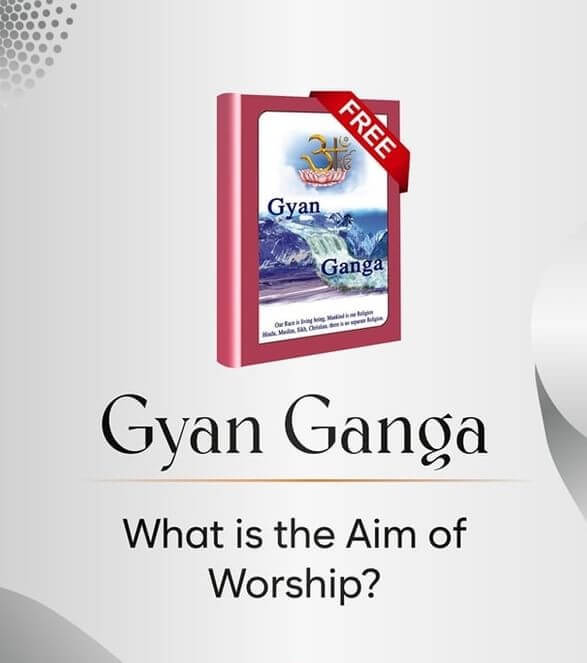The Revelation of True Knowledge
What Do the Scriptures Reveal About Supreme God?
The terms Prabhu, Swami, Ish, Ram, Khuda, Allah, Rab, Maalik, Master, Sahib, Dev, Bhagwan, and God are all power-denoting words used across different languages to describe the Almighty. Every soul recognizes a higher power that brings supreme joy and alleviates suffering. But who is He? What is His nature? Where is He, and how can He be attained? These questions, which have lingered unanswered for ages, will be clarified in this book.
The Supreme God is the one who grants sight to the blind, speech to the mute, and hearing to the deaf. He blesses the childless with children, the poor with wealth, and the sick with health. His presence brings bliss. He is the Creator of all universes, the giver of complete peace, the Jagatguru (Guru of the universe), and omniscient. Without His command, not even a leaf can move—He is all-powerful and nothing is beyond His reach. The entity with these attributes is truly the Supreme God.
One key point to consider is that knowledge of any divine power is primarily derived from scriptures. These scriptures serve as the foundation upon which gurus guide their disciples. The recognized holy texts include the four Vedas (Rigveda, Samaveda, Yajurveda, and Atharvaveda), the Shrimad Bhagavad Gita, Shrimad Bhagwat Sudhasagar, the eighteen Puranas, the Mahabharata, the Bible, and the Quran. These are regarded as certified holy scriptures.
By the command of Supreme God, Jyoti Niranjan (also known as Kaal) concealed the four Vedas in the ocean with his breaths. During the first ocean churning, Lord Brahma recovered these four Vedas. Brahma Ji, the eldest son of Kshar Purush, studied the Vedas, and his limited understanding formed the basis of the knowledge he spread throughout the world through his descendants (the sages). The Supreme God had also provided a fifth "Swasam" (Sukshm) Ved to Brahm (Kaal), but Jyoti Niranjan secretly kept and destroyed this scripture.
After one kalp (a period of one thousand chaturyugas), all living beings in the three realms—Earth, Heaven, and the Netherworld—are destroyed. Then, by the order of Jyoti Niranjan (Kaal), when Brahma’s night (also lasting one thousand chaturyugas) ends and the day begins, Brahma, influenced by Rajogun, starts the creation of living beings in these three realms once again.
In the beginning of Satyug, Kaal (Brahm) again grants the same four Vedas to Brahma. However, due to natural disasters, the knowledge of these Holy Vedas is lost over time. To restore it, Kaal enters into other sages and has them rewrite the Vedas according to the era. Still, with time and after various calamities, selfish individuals alter the Vedas, causing the original knowledge to disappear from the world. During the Mahabharat, Kaal, by entering Shri Krishna's body, provided a concise summary of the four Vedas in the form of the Shrimad Bhagwat Gita. He told Arjun that he had imparted this knowledge earlier to the Sun, who passed it to his son Vaivashvat (Manu), and Manu passed it to his son Ikshvaku. However, over time, this supreme knowledge had nearly vanished.
Kaal (Brahm/Jyoti Niranjan) entered the body of Shri Vedvyas Rishi and had the four Vedas, Mahabharat, eighteen Purans, Shrimad Bhagavad Gita, and Shri Sudhasagar written in Sanskrit, which are available today. These scriptures are considered supreme. However, modern scholars have translated these texts into Hindi and added their interpretations, which often seem incorrect and inconsistent with the original meaning. Maharishi Vyas ji rewrote these scriptures approximately 5,300 years ago, during a time when there were no distinct religions like Hinduism, Christianity, Islam, or Sikhism. Instead, there were only Aryas who followed the Vedas, and society was divided into four castes (Kshatriya, Vaishya, Brahmin, and Shudra) based on occupation.
This proves that all these scriptures are not meant for any specific religion or individual, but are intended for the welfare of all humanity. Additionally, it confirms that our ancestors shared a common heritage, with interconnected values and traditions.
← World-Victorious Saint The Mystery of the Sacred Puranas →
